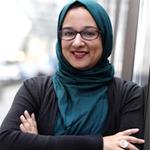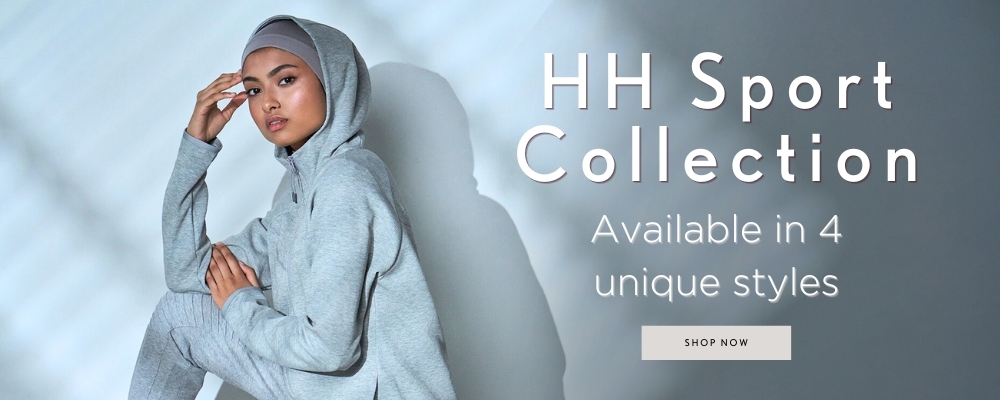#CantBanUs – Hijab in the Women's World Cup Has Us Asking, What's France's Move?
Current Events
|
Aug 2, 2023
|
4 MIN READ
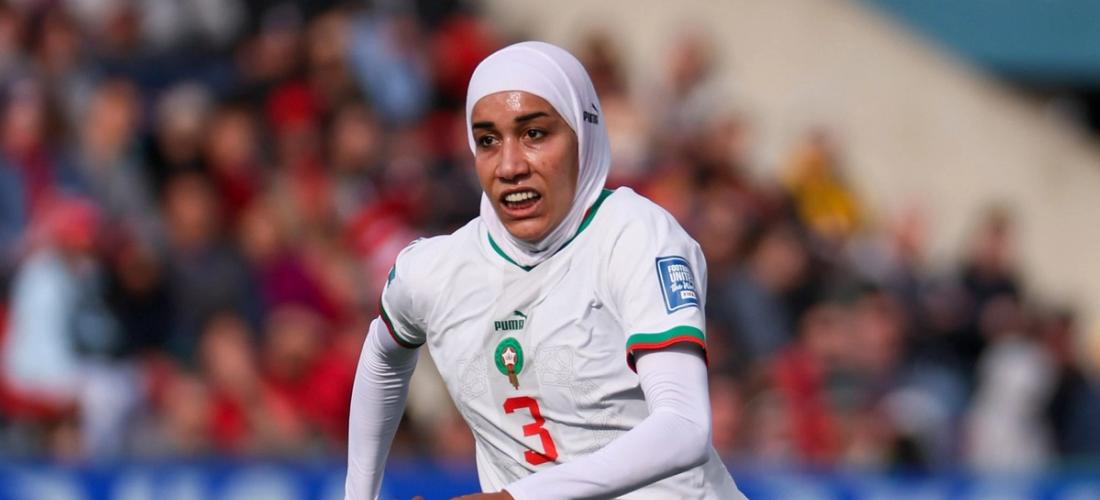
Nouhaila Benzina at the 2023 Women's World Cup; image source: Twitter and Sky News
Are you watching the 2023 Women’s World Cup, taking place in Australia and New Zealand?
If not, you should be! It felt like the world’s eyes were on Qatar and the Morocco men’s national football team in their awe-inspiring advance in the World Cup last winter, igniting joy and love across Muslim (and other) communities around the world. The country’s women’s team - making their first appearance in a World Cup – is also making history, having advanced to the knockout stages!
The Morocco women’s national football team won their last game of their group stages in their bid to break free and make it into the knockout stages of the World Cup. They beat Columbia, who was sitting at the top of Group H, to advance. (This also came because Germany tied South Korea 1-1 in their group, which Morocco needed to happen for them to advance.)
But even before this historic push into the knockout stage, Morocco has already been making waves.
Playing for the Morocco Atlas Lionesses is Nouhaila Benzina, the first women to wear hijab and play in a World Cup since FIFA lifted their ban on hijabs and religious headwear in 2014.
Her story has received a lot of media attention as a symbol of how the World Cup and the sport is continuing to move towards more inclusive practices, which is great. Along with Nouhaila, Heba Saadieh also drew attention as the first hijab-wearing (and Palestinian) referee in this year’s Women’s World Cup.
We love hearing and seeing these stories. It is like the millionth affirmation of something we’ve known all along at Haute Hijab – “When a woman knows who she is and what she's capable of, fueled by the certainty of la illaha illAllah, nothing can stop her,” as our CEO Melanie Elturk writes. And this includes if she chooses to wear hijab and play sports, referee, be an entrepreneur, teach in the public school system, fill-in-the-blank.
But, as other sports journalists and commentators like Canada’s Shireen Ahmed, a senior contributor at CBC, have noted, we can’t help but wonder why the sporting world and news agencies aren't taking the beauty of these moments and pushing deeper to ask the harder questions of countries where hijab bans are maintained.
Like in France.
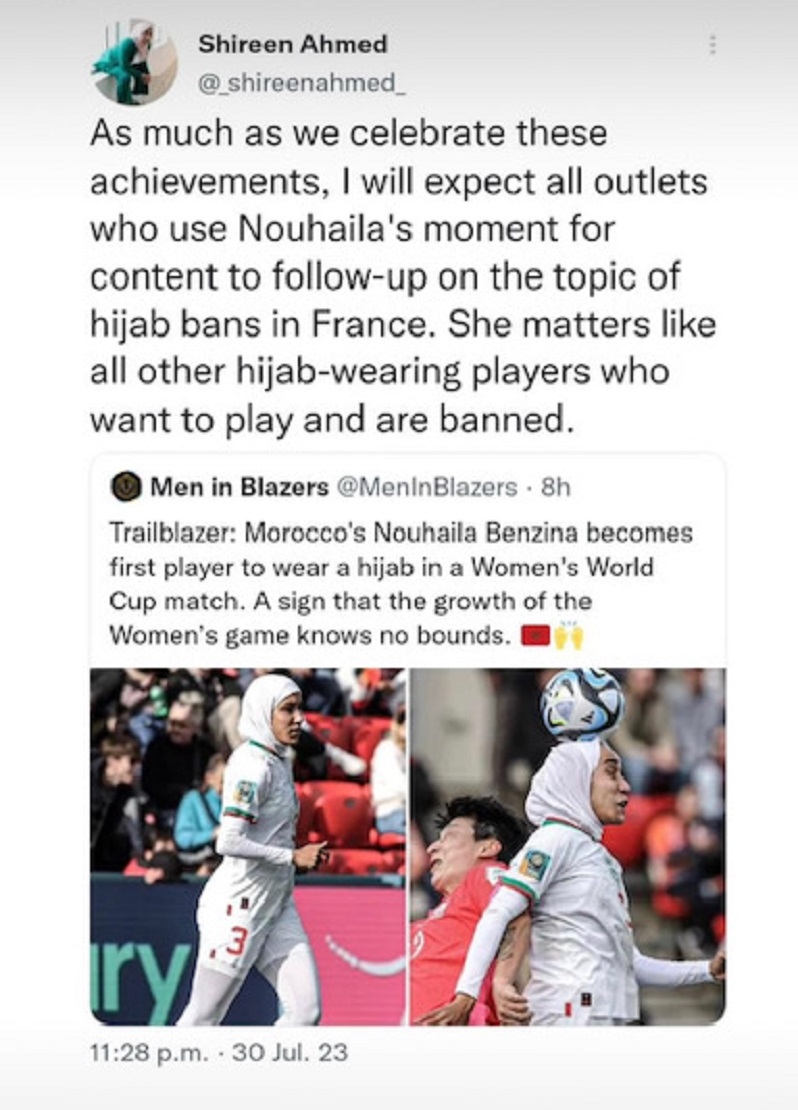
In January of 2022, the French senate passed an amendment (put forth by a right-wing group), 160 votes to 143, to ban the hijab in sports competitions. Why? Because the French Senate argued that “neutrality is a requirement on the field of play.”
In this post that I wrote about the ruling, the motion was “masked as progressiveness and ‘forward thinking.’ … as the French Senate pronounced that what was once the key footing for a secular society – to practice one's faith without judgment – is now an obstruction of justice.
France will be hosting the Olympics next year in Paris, and their government officials have said little about what they will do about the many hijab-wearing Muslim women athletes who will come to compete.
And if the last Olympics are a bellwether of things to come, this ban will be coming back to haunt them. Consider how the fight to wear what one wants to wear in competition has morphed beyond hijab. It expanded in the last Olympics to the German gymnastics team and Norwegian Olympic Women’s Handball team, both who asserted their right to wear what they want, to choose clothing that de-sexualizes their sport.
“We wanted to show that every woman, everybody, should decide what to wear,” said German gymnast Elisabeth Seitz to reporters at the 2020 Tokyo Summer Olympics. “That doesn't mean we don't want to wear the normal leotard any more. It is a decision day by day, based on how we feel and what we want. On competition day, we will decide what to wear."
Hijab-wearing Muslim women have been fighting for their right to compete in hijab from school to college and all the way to professional levels for years. Our ongoing “#CantBanUs” campaign is just about that – the right to dress modestly and in hijab (or however one wants to) as a Muslim athlete.
(Read here about 10 Muslim women athletes who refused to take “no” for an answer.)
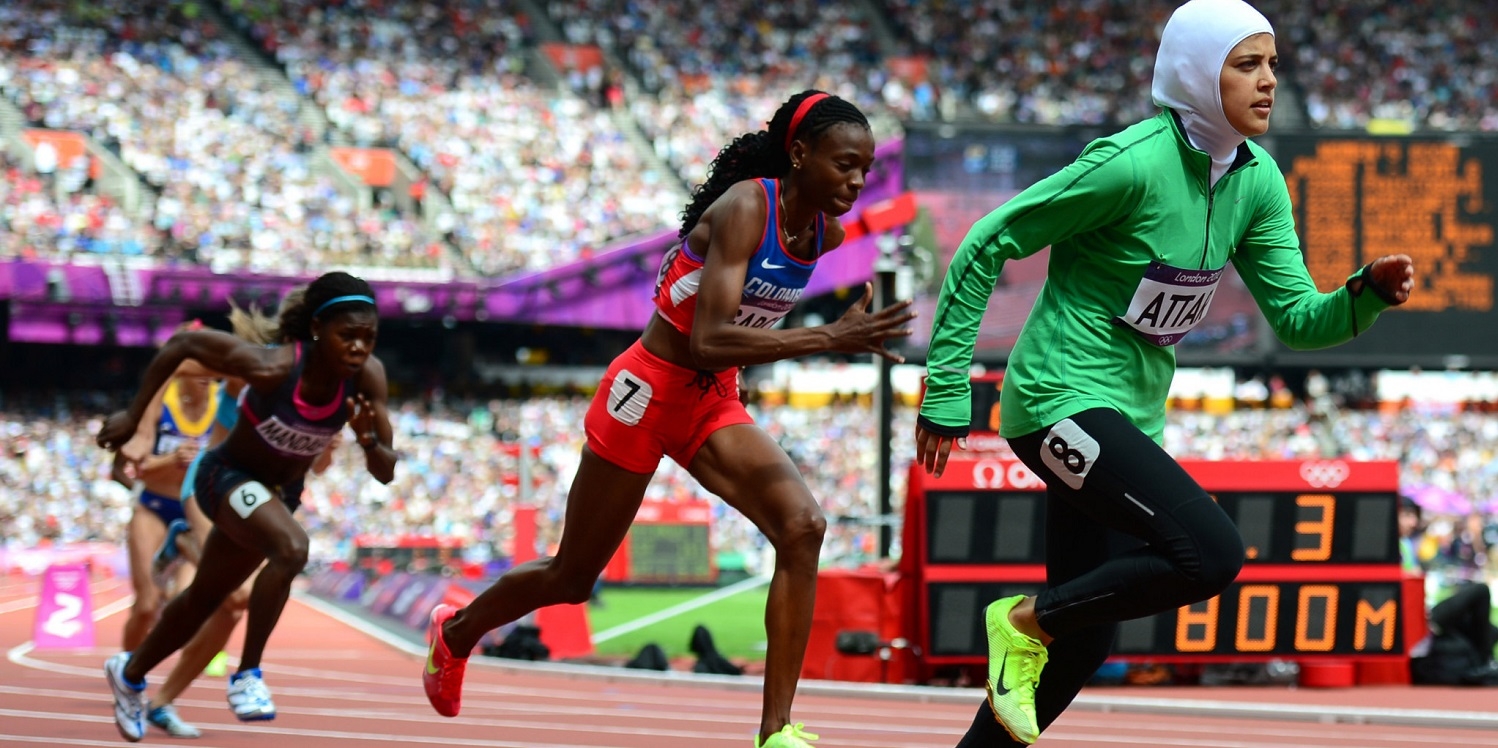
Athletes competing at the last Olympics; image source: Wikimedia Commons.
It’s been fantastic watching Nouhaila and her teammates play in this year’s World Cup. We love seeing Heba and her referee cohorts doing their jobs as well. And while wearing hijab and playing a sport is no big deal in Muslim-majority countries, it still represents something in other parts of the world:
As Shireen wrote in this piece, “I also talked with Moroccan journalists about Benzina and the importance of her hijab, They told me that questions around her hijab aren't asked by Moroccan media. For them, it is completely normal. Athletes in different tiers and leagues play with or without hijab and both are readily accepted.
“Muslim-majority places don't struggle with juxtapositions or perceptions of covered Muslim women who play elite sports like Western countries might – for them it's just the same. But as someone from Canada, who is a part of a small minority who wears hijab, it matters how it might affect other Muslim girls from racialized communities who aren't vastly represented.”
We couldn’t agree more. And we’re wondering what France will be doing next year in regards to hijab-wearing competitors, when it comes time for the Summer Olympics.
We are proud to join these fierce women, like high school volleyball player Najah Aqeel and our former HH Sport Ambassador Bilqis Abdul-Qaadir, in their fight against hijab bans with our “Can’t Ban Us” campaign that aims to elevate these stories and engage in advocacy efforts. Please share your story with us here.
Subscribe to be the first to know about new product releases, styling ideas and more.
What products are you interested in?

